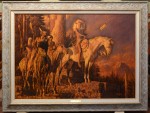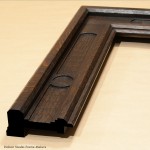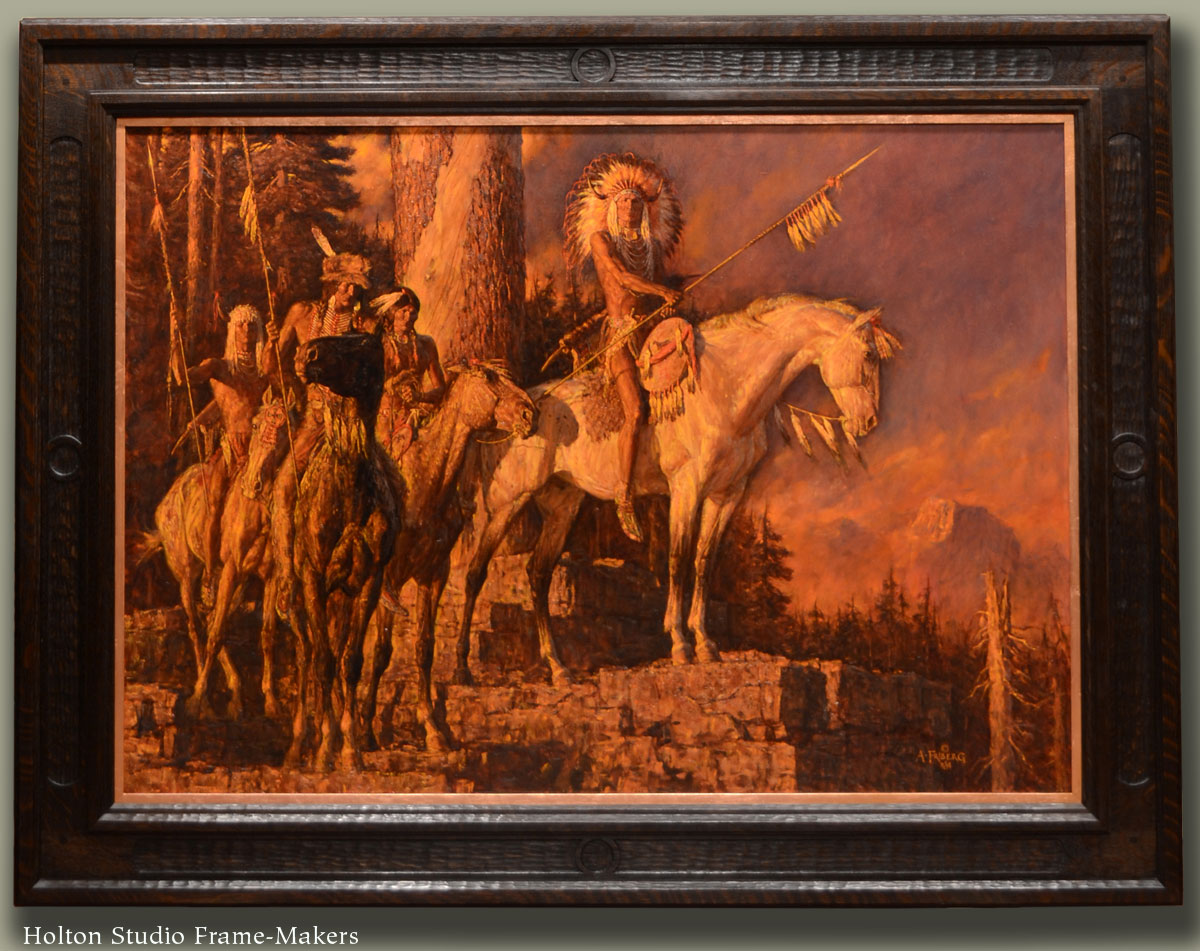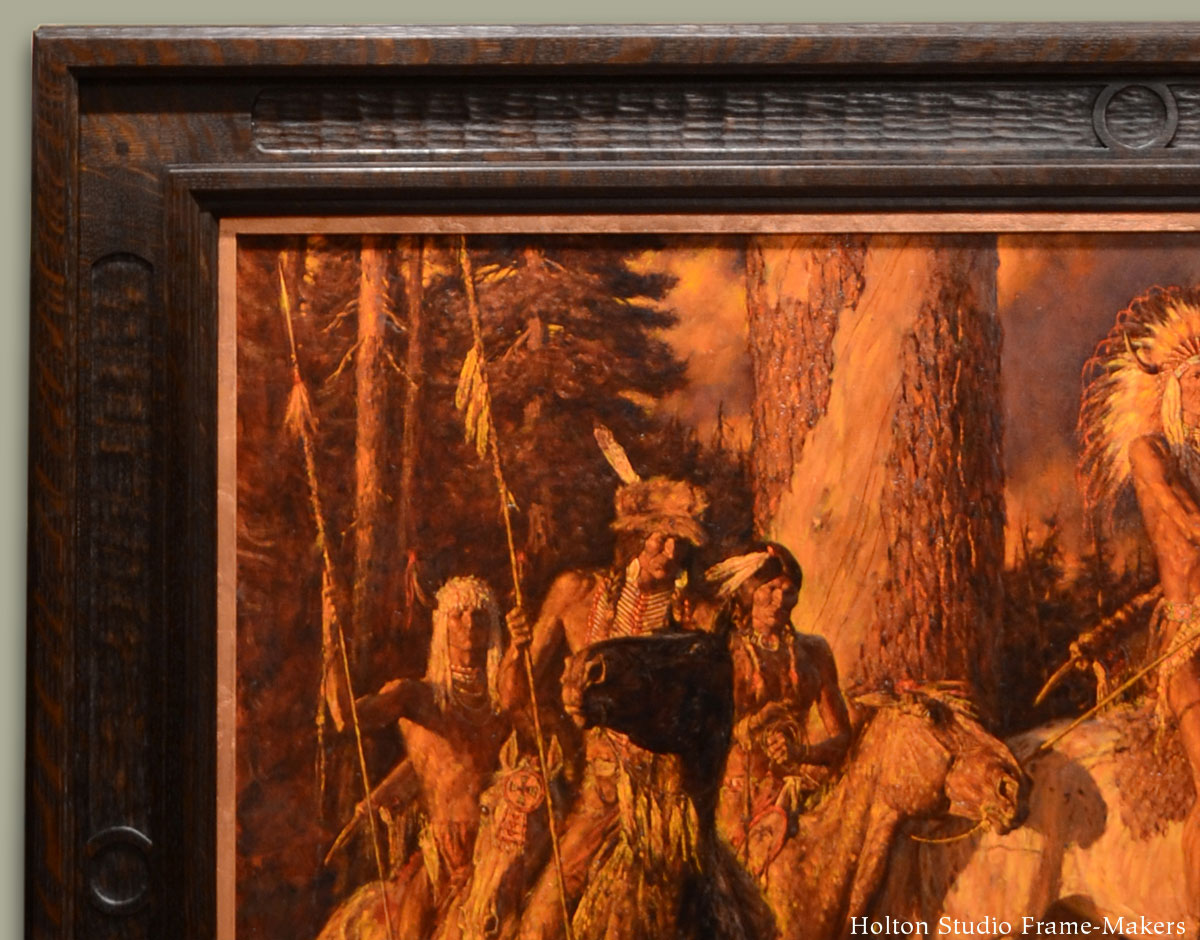1975. Oil on canvas, 36″ x 51″. Framed in carved Cassetta, 5-1/2″ wide, in quartersawn white oak (Dark Medieval Oak stain), with copper-leafed oak liner.
Perhaps best known as Cecil B DeMille’s chief artist on “The Ten Commandments,” Arnold Friberg was one of the great American illustrators of the twentieth century. Always interested in heroism, he spent much of his career honoring American Indians, this piece being a prime example. It was a great privilege to be chosen to re-frame this important painting. You could scratch your head bald trying to figure out what possessed someone to put it in a white frame (and one of most dreary quality, to boot; see at right). I suppose it was that common instinct to “lighten up” a dark painting, or maybe it was a response to the white horse — which isn’t actually white, and looked a lot less white in a setting much whiter. Important lesson: it’s always a mistake to try to make a painting something it’s not. Another lesson in this before-and-after comparison is the effect a dark frame has of acting as a surrounding shadow and thereby spotlighting a painting, making a dark painting seem, NOT darker, but lighter; and, since the eye goes to light, the dark frame directs the eye to the painting. A copper leaf liner (gold would’ve been too light and not quite the right color) provides a narrow rim of light for definition.
The frame needed to be simple and rustic, but very alive to the powerful image. The texture of the rocks and trees, as well as the paint on the canvas, suggested carved quartersawn white oak. The circle theme—the shield, headdress and, of course, the eyes of Chief Joseph—suggested the circle medallion at the centers. The steps and carved chamfers in the frame profile (left) enhance the perspective, echo the rocks and lead the viewer into the historical distance that the picture represents.
“Art is always at its best when serving a cause greater than the artist.” — Arnold Friberg
Hear, hear.




